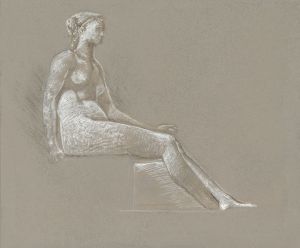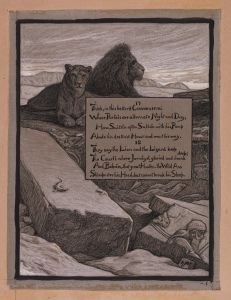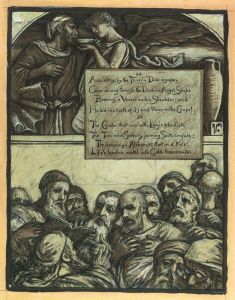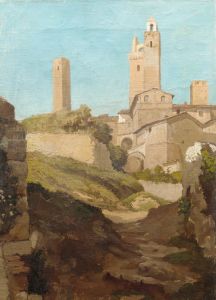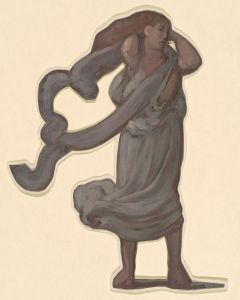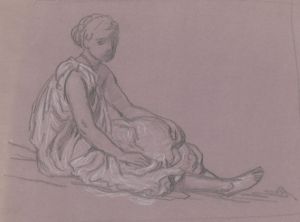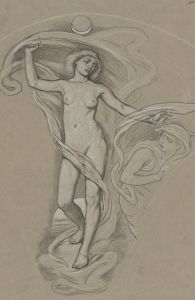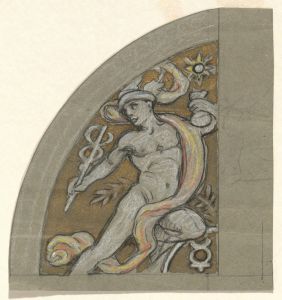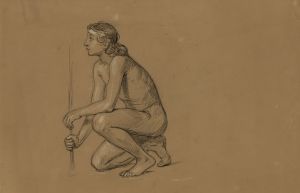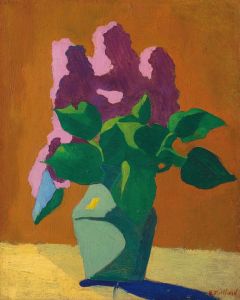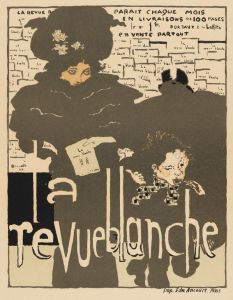
Figure Study for Rubaiyat of Omar Khayyam
A hand-painted replica of Elihu Vedder’s masterpiece Figure Study for Rubaiyat of Omar Khayyam, meticulously crafted by professional artists to capture the true essence of the original. Each piece is created with museum-quality canvas and rare mineral pigments, carefully painted by experienced artists with delicate brushstrokes and rich, layered colors to perfectly recreate the texture of the original artwork. Unlike machine-printed reproductions, this hand-painted version brings the painting to life, infused with the artist’s emotions and skill in every stroke. Whether for personal collection or home decoration, it instantly elevates the artistic atmosphere of any space.
Elihu Vedder's "Figure Study for Rubaiyat of Omar Khayyam" is an intriguing piece of art that reflects the artist's deep engagement with the themes and aesthetics of the Rubaiyat, a collection of quatrains attributed to the Persian poet Omar Khayyam. Vedder, an American symbolist painter, is best known for his illustrations of the Rubaiyat, which were published in 1884 and have since become iconic interpretations of the text.
The "Figure Study for Rubaiyat of Omar Khayyam" is one of the preparatory works Vedder created as part of his process in developing the final illustrations for the book. This study, like many of Vedder's works, showcases his fascination with allegorical and mystical themes. The Rubaiyat itself is a philosophical text that explores themes of fate, the fleeting nature of life, and the pursuit of pleasure, which provided a rich source of inspiration for Vedder's symbolist approach.
Vedder's artistic style is characterized by a blend of realism and symbolism, often incorporating elements of the fantastical and the mystical. In his figure studies, Vedder meticulously explored human anatomy and expression, aiming to capture the emotional and philosophical depth of the Rubaiyat's verses. His studies were not merely technical exercises but were imbued with the same contemplative and introspective qualities that define the final illustrations.
The "Figure Study for Rubaiyat of Omar Khayyam" likely served as a foundational piece in Vedder's creative process, allowing him to experiment with composition, form, and the emotive potential of the human figure. While specific details about this particular study are limited, it can be inferred that it contributed to the development of the visual language Vedder employed in the published illustrations.
Vedder's illustrations for the Rubaiyat were groundbreaking at the time of their publication. They were among the first to visually interpret the text in a way that resonated with the Western audience's growing interest in Eastern philosophy and aesthetics during the late 19th century. The illustrations were praised for their ability to capture the essence of Khayyam's poetry, blending Eastern and Western artistic traditions.
The influence of Vedder's work extended beyond the Rubaiyat itself, impacting the broader art world and contributing to the symbolist movement. His ability to convey complex philosophical ideas through visual art was highly regarded, and his illustrations have continued to be celebrated for their artistic and cultural significance.
In summary, Elihu Vedder's "Figure Study for Rubaiyat of Omar Khayyam" is an important piece within the context of his work on the Rubaiyat. It reflects his dedication to capturing the philosophical depth of Khayyam's poetry through meticulous study and artistic innovation. While specific details about this particular study are scarce, its role in the development of Vedder's iconic illustrations is undeniable, marking a significant contribution to the intersection of art and literature in the 19th century.






